|
George Heyman, MLA asked us two questions after our presentation to the Select Standing Committee on Finance and Government Services on Monday, September 19, 2016. We would really appreciate your help answering them.
[Download a PDF of this letter.]
September 23, 2016 Vancouver Board of Education Trustees Vancouver School Board 1580 W. Broadway Vancouver, BC V6J 5K8 Dear Trustees, We write today because we are deeply troubled by the process and approach the VSB is currently taking with respect to school closures. We understand the pressure to eliminate “inefficiencies” in facilities usage to secure seismic funding (despite the Minister of Education’s recent removal of a firm 95% capacity utilization target), and we understand the fiscal pressures that are driving the recommendation of multiple school closures on a much faster timeline than is laid out in the Long Range Facilities Plan (LRFP). However, we are extremely concerned that closures of this magnitude, which will have a massive and long-term impact on the provision of education within our district, are being executed without sufficient time or public input to consider the complexity of factors that affect students and neighbourhoods. Such factors include the distribution of enrolment within and outside catchment areas, the needs of vulnerable students and communities, and changes in the distribution of school-age children within the city. We urge you to halt the closure process now, and to draw up a revised proposal that better serves the long-term interests of students and communities. The Parent Advocacy Network (PAN) cannot support the process by which the current list of proposed schools for closure was created, as it did not adequately consider both Factor 1 and Factor 2 criteria as stipulated within the LRFP. This oversight has marginalized the human cost of school closure and has ignored the harmful impact of closures particularly on communities with a high proportion of vulnerable students. The data presented to justify the identification of schools for closure do not take into consideration the broader context of where students reside and how mobility patterns are impacting school enrolment. Further, the reliance on Baragar projections precludes the examination of crucial information on where students actually live – information that is essential to making decisions that must serve the long-term educational needs of the city and not perpetuate spirals of decline in some schools perceived by parents to be undesirable. Even a cursory examination of 2011 census data clearly shows that enrolment in a particular school does not necessarily correlate with population growth, stability or decline within its neighbourhood. For example, extrapolating from 2011 census data, the neighbourhood of Sunset has an elementary-school-age population of 3,148. The current capacity of schools in the area is only able to accommodate 50% of the population, and the proposed closure in this neighbourhood would decrease this to 40%. It is imperative to consider the impact on enrolment at neighbourhood schools of new schools being constructed nearby, of the location of district programs, and of choice mobility. Given the severe and long-term impact of school closures, we believe trustees should have a full understanding of enrolment patterns and neighbourhood populations – including that provided by 2016 census data, due to be released in February – before making irrevocable decisions. Parents have not been offered any alternative solutions to closure, such as the rightsizing of too-large buildings so that we may retain neighbourhood schools for viable student populations. Perhaps the Minister of Education’s recent revocation of the 95% capacity utilization target opens up such possible solutions where only recently they were perceived to be impossible. In addition to reducing surplus capacity, rightsizing would eliminate deferred maintenance costs and provide sufficient space for specialty facilities like arts rooms, and early childhood learning or after-school care to support families. Such facilities would be consistent with the vision of schools as Neighbourhoods of Learning, reflecting community needs and creating an environment for the proactive retention of local enrolment. We’ve seen no indication that the VSB has considered revising catchment boundaries where oversubscribed and undersubscribed schools lie adjacent to one another, grandfathering existing students, but better redistributing capacity needs for the long-term. We urge you to consider the public’s experience in receiving and trying to make sense of the information they’ve been given. We hear every day from parents that they are very unclear about what’s going on and why. This level of confusion has the practical effect of disenfranchising the residents of our city. It is imperative that families in Vancouver fully understand what is at stake, what is being lost, and how the losses will affect all children across the district. Almost no attention has been paid to the dozens of schools that will be affected by a large, and unpredictable influx of students. Parents of these schools have not received notification or been given voice within this process, nor is it at all clear what the definition of "reasonable accommodation" might mean in practical terms for these school populations. Moreover, there has been a failure to acknowledge the high degree of uncertainty inherent in this process. The experience of Carleton Elementary after the recent fire can be seen as a cautionary example. A thoughtful plan was communicated to accommodate the full student population at Cunningham Elementary, but things didn’t proceed according to that plan. Parents didn’t unanimously follow what was laid out, and a sizeable proportion of Carleton students scattered, creating an unanticipated strain on three nearby schools and the need to surplus a sizeable number of staff and teachers. What will be the unanticipated ripple effects of 11 simultaneous school closures that will displace 3,188 students? More concerning, how will the VSB manage the scale of confusion and trauma that will result from this many students — a large proportion of whom are already vulnerable and coping with social and emotional challenges — transitioning into unknown school environments without any “safe” or familiar adults who understand their needs and support them in through this disruption? Though PAN is not, in principle, opposed to the notion of closing schools if there is a redundancy of facilities or true population decline that’s unable to support a viable neighbourhood school, we firmly believe that public support for closures is conditional on confidence in the process and the completeness of any supporting data used. PAN has, with due respect, lost confidence in this process. The consequences of closing this many schools based on narrow parameters and a flawed selection process are so grave that we must urge you to vote NO on September 26th. We ask you to redirect VSB staff to revise their approach to encompass the contextual information needed to fully understand population needs and trends, and to create a proposal that reduces surplus capacity in ways that promote healthy communities through the retention of neighbourhood schools, utilizing a combination of creative options for rightsizing and partial repurposing. We also ask you to demand assurance from the provincial government that the VSB will receive the funds and flexibility needed to advance projects through the Seismic Mitigation Process in a timely manner that will provide safe and educationally appropriate facilities for students, to serve the needs of current and future generations. We do not underestimate the risks inherent in this decision, and the fiscal implications for delaying this process. However, the only thing worse than deciding to dismantle neighbourhood schools would be to make a decision without sufficient evidence that this is in fact the only course of action. Your vote on September 26th will determine the future of public education in this district. We urge you to resist the pressure to move to an economies-of-scale model that will see the dismantling of the progressive vision of neighbourhood schools that the Board has fought so hard to maintain. Consider the legacy of the decisions you make. Sincerely yours, Parent Advocacy Network Steering Committee While we have not been feeling the love from the provincial government — the Minister of Education continues to refuse to meet with us — this week we have felt the love from other levels of government. On Monday, September 19, 2016, MP Don Davies (Vancouver-Kingsway), called on the Prime Minister to make federal funds available to seismically upgrade BC schools. On Tuesday, September 20, 2016 City of Vancouver Councillor Andrea Reimer brought the motion "Standing Up for Vancouver's Neighbourhood Schools" to City Council. The motion requires a letter be written to the Ministry of Education requesting that the Provincial capacity-utilization requirements be amended to:
PAN Presents to BC's Select Standing Committee on Finance and Government Services on Budget 20179/20/2016 On September 19, 2016, Maggie Milne Martens of PAN presented to the Select Standing Committee on Finance and Government Services about our desire that education be a top priority for Budget 2017.
Our summary Parent Advocacy Network affirms:
We were not alone in advocating for public education. PENS and FACE also presented in Vancouver. While they will hopefully hear from many more on the importance of public education, the more the message is amplified, the more likely it is to have an impact. While the committee has moved on from Vancouver, you can still let them know how the current underfunding is affecting you, your children, and your community by sending in a written, audio or video submission or complete an online survey (deadline, October 14, 2016). (More information is available in our September 2, 2016 blog.) The Committee will issue a report in November, making recommendations to the Finance Minister for the upcoming budget. PAN was pleased to be included in Richmond Schools Stand United (RSSU)'s rally on Saturday, September 17, 2016. Great turnout of concerned kids, families and concerned community members protesting school closures (on Friday, 3 vibrant schools in Richmond were named as likely to close in June 2017) and underfunding of public education. Our Andrea Sinclair spoke on the importance of advocacy while Jen Stewart of Families Against Cuts to Education (FACE) and PAN wrapped up the rally with a talk on provincial underfunding. Update Sept 18/16: The survey is now online, please complete before OCTOBER 15.
It is fast approaching the time to sign up to speak before the Select Standing Committee on Finance and Government Services, the same ALL PARTY committee that has recommended increased funding and a review of the funding method for public education for several years. Help ensure this year is no different, in fact, assist them in giving even stronger recommendations for Budget 2017. Important dates:
To register to present at a public hearing, email FinanceCommittee@leg.bc.ca on or after 9:00 a.m. on Tuesday, September 6. All requests will be considered in the order they are received and only those received after 9:00 a.m. on September 6 will be considered. Include the names of each presenter and organization, including full contact information. The Committee will hold public hearings in the following locations (follow link to see exact times and locations):
If you are unable to present in person, you can also send in a written, audio or video submission or complete an online survey. For more details, go to their website. Update: September 23, 2016: Video recordings thanks to Simon Fraser University: Faculty of Education Thank you to all who were able to attend our "Public Education Matters" forum on Wednesday evening, including concerned citizens from Vancouver and surrounding cities, current and former school trustees, and Vancouver MLAs, both Liberal and NDP. Thank you to our co-hosts, Douglas Elementary, for sharing your beautiful newer school and the delicious concession. Thank you to our special guest speaker, Alex Hemingway of the Canadian Centre for Policy Alternatives (BC) for your informative, well-researched presentation. Finally, thank you to our moderator, Helesia Luke, a long-time education advocate who generously donated her time and knowledge. For those of you unable to attend, or those looking for more information, we have the following:
On May 10, 2016, PAN sent a statement signed by 735 community members to the Minister of Education regarding the Vancouver School Board's budget situation. On July 25, 2016 PAN received the response from the Minister. While we appreciate the correspondence, it contains many familiar government talking points that have been analyzed and refuted by, among others, the BC Office of the Canadian Centre for Policy Alternatives (Education Crisis) and Families Against Cuts to Education (Seeing Through Spin and Underfunding is a Fact). The BC government claims that funding for public education is at “record levels”, but that simply isn’t the case. The Canadian Centre for Policy Alternatives tells the real story behind BC’s education funding crisis at http://www.policynote.ca/education-crisis (on Facebook at: https://www.facebook.com/policyalternatives/).
Media response: Global News, August 25, 2016 - Another Debate Over School Funding Levels - includes interviews with Alex Hemingway (CCPA) and Andrea Sinclair (PAN) pdf version
Parent Advocacy Network Responds to Vancouver School Board List of Schools for Closure The Parent Advocacy Network (PAN) has serious reservations about the Vancouver School Board’s (VSB) recommendation of 12 schools identified for closure as early as June 2017. A simultaneous closure of this scale would cause massive disruption and upheaval across the district, displacing 3,188 children, impacting thousands more through crowding and consolidation, and dismantling support networks vital to the well-being of many families. PAN recognizes the need of School Boards to align their facilities with changing demographics and educational priorities; however, we believe this extreme proposal is not in the best interests of children's education, community needs, or even taxpayers' returns. Rather, it is the only option left to a Board crippled by years of underfunding and held hostage by the efficiency-driven restrictions and the educationally unsound 95% capacity utilization target mandated by the provincial government as a precondition for seismically upgrading schools. Vancouver has 69 schools (more than 50% of the entire number in BC) that remain at high risk for structural collapse in the event of an earthquake. A 95% capacity utilization mandate, based on profit margin accounting and not on educational priorities, does not allow sufficient space to meet the learning needs of all children. This current proposal alone would jeopardize 12 music and arts spaces, 3 early childhood programs, and 5 on-site before/after school care programs. It would also restrict the VSB's ability to use space as an essential resource for the 25 special needs programs that operate throughout the district, as well as tiered schools with high levels of at-risk children — disproportionately impacted in this closure list — who require smaller class sizes and additional support space to meet complex learning needs. Closing lower capacity schools, with highly vulnerable populations, and stuffing larger facilities to or over capacity, may meet government's “efficiency” standards, but will take a heavy toll on the socio-emotional well-being of these students. Of further concern is that capacity utilization percentages do not reflect the viability of a school community or where student populations actually reside. Up to 40% of Vancouver public school students do not attend their catchment school. This is one of the legacies of choice legislation, introduced in 2002, to encourage a consumer model of education. This has resulted in a net migration of students away from schools in lower income areas, where housing is most affordable and where families are more densely located. Closures that structurally reinforce a misalignment of school facilities with actual population will seriously affect the viability of neighbourhoods for the future. PAN is extremely concerned that the 95% capacity target, recklessly pursued by the provincial government, is being used to justify continued underfunding of public education and reduce the government’s obligation to make schools seismically safe for children. The VSB estimates that it will only save $8.8 million from the closure of 12 schools, with only $5.1 million directly related to facilities costs. This is woefully inadequate in the face of this year’s $21.8 million shortfall and the estimated $79 million of increased funding needed to restore educational services in Vancouver to 2001 levels, even accounting for declined enrollment. The provincial government has created a crisis out of surplus space to deflect attention away from the real ongoing crisis, which is the completely inadequate and unsustainable amount of funding allocated to public education. There are better and more cost-effective ways of addressing surplus capacity that align schools with community needs. First, building and right-sizing replacement schools rather than simply adding structural reinforcement would align community needs with school facilities and, given $708 million already accumulated in deferred maintenance costs, save the government over $200 million in capital expenditures in Vancouver over a 40-year life cycle. Second is the recognition and preservation of school spaces that have been re-purposed for community programs such as desperately needed early childhood education and care. This progressive vision of creating “Neighbourhoods of Learning,” initiated by the BC Liberals in 2008 but now forgotten, recognizes the ebb and flow of enrollment patterns, preserves space for future student populations, and provides essential services for communities. Unfortunately, the provincial government's capacity restrictions, its bottom-dollar approach to upgrades, and its refusal to fund temporary accommodation during seismic construction do not give the VSB the funds or the flexibility needed to make fiscally prudent or educationally beneficial decisions for students. PAN once again calls upon the provincial government to respect the recommendations of its own Select Standing Committee: to provide adequate capital funding to school districts for facility improvements and seismic upgrades and to also provide stable, sustainable, and adequate funding to enable school districts to fulfill their educational mandate to provide accessible, equitable, and quality public education to all children. |
PANPAN updates and news, partner events, and other timely information relating to public school advocacy in and around Vancouver, BC. Archives
June 2020
Categories
All
|

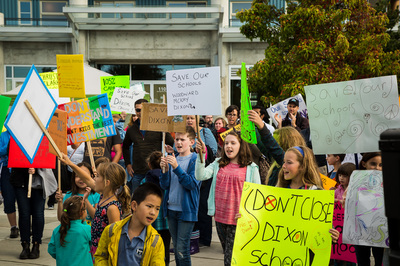
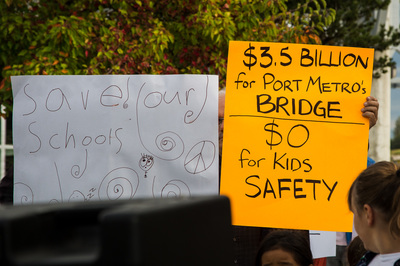
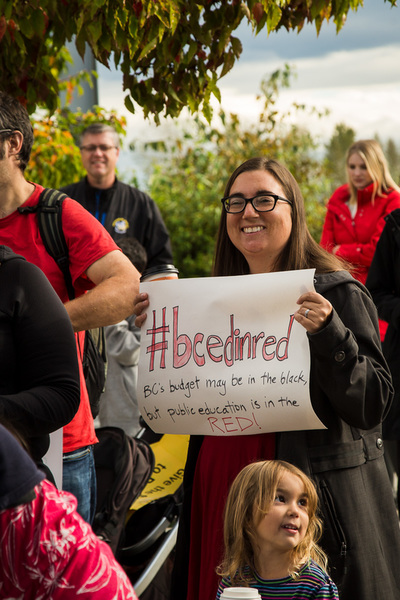
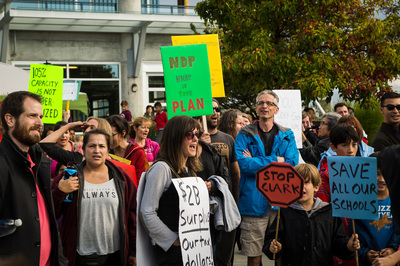
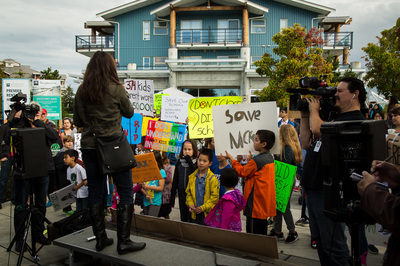
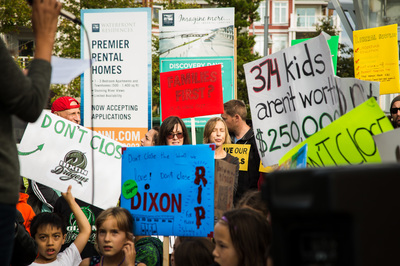
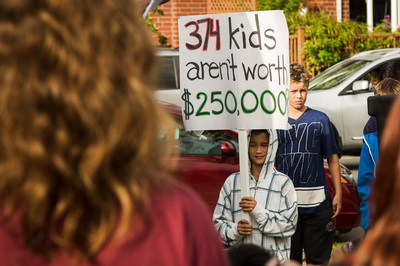


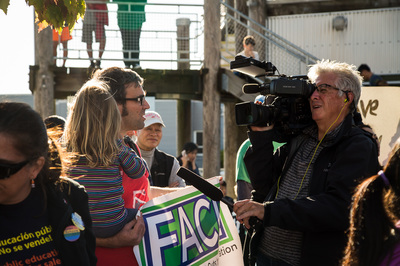
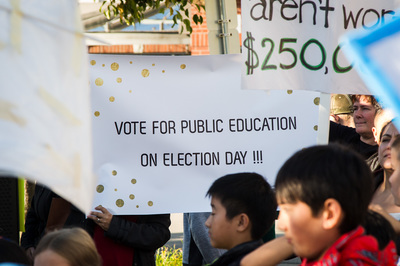

 RSS Feed
RSS Feed